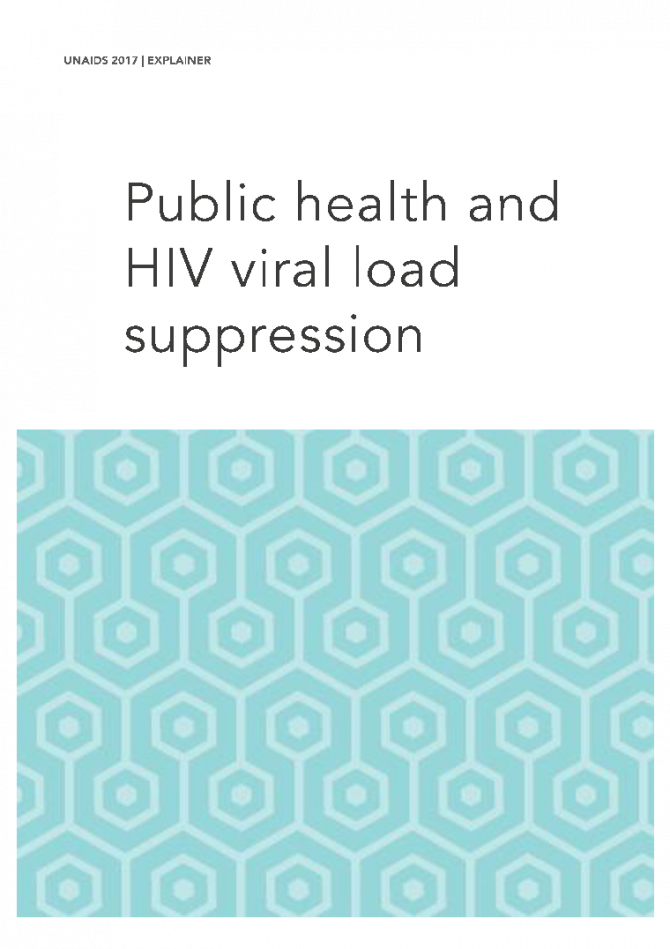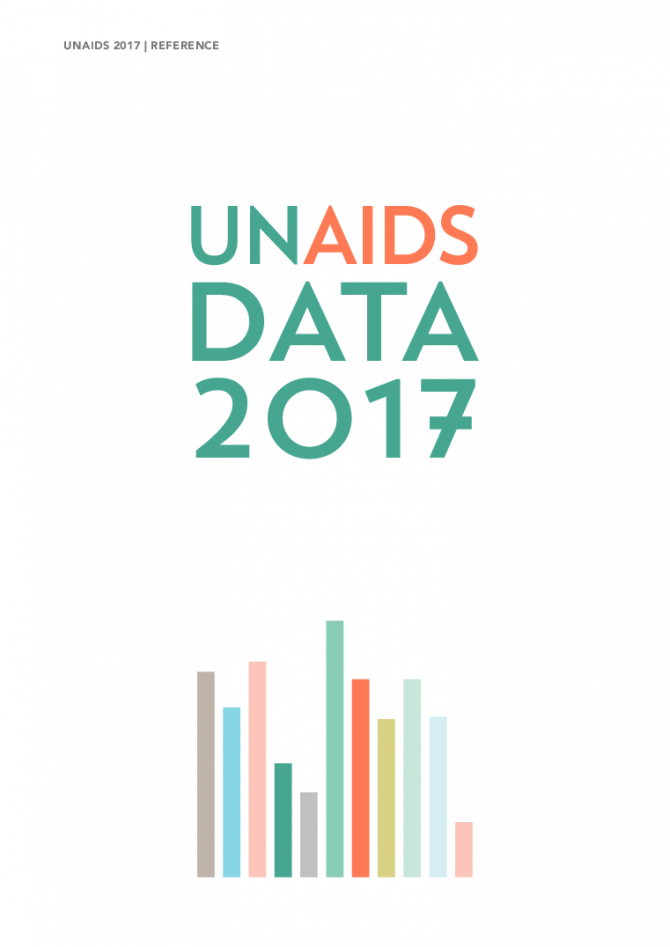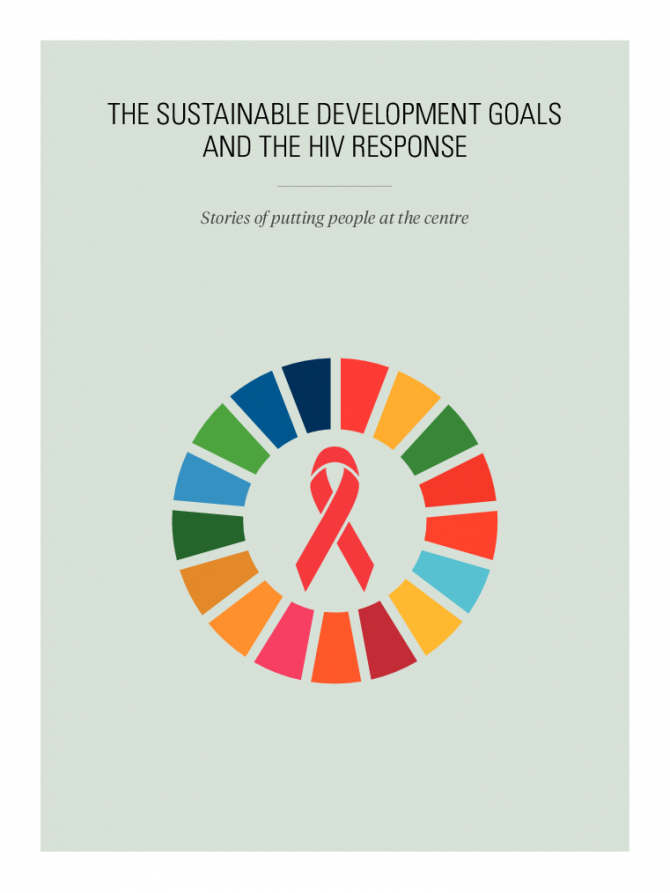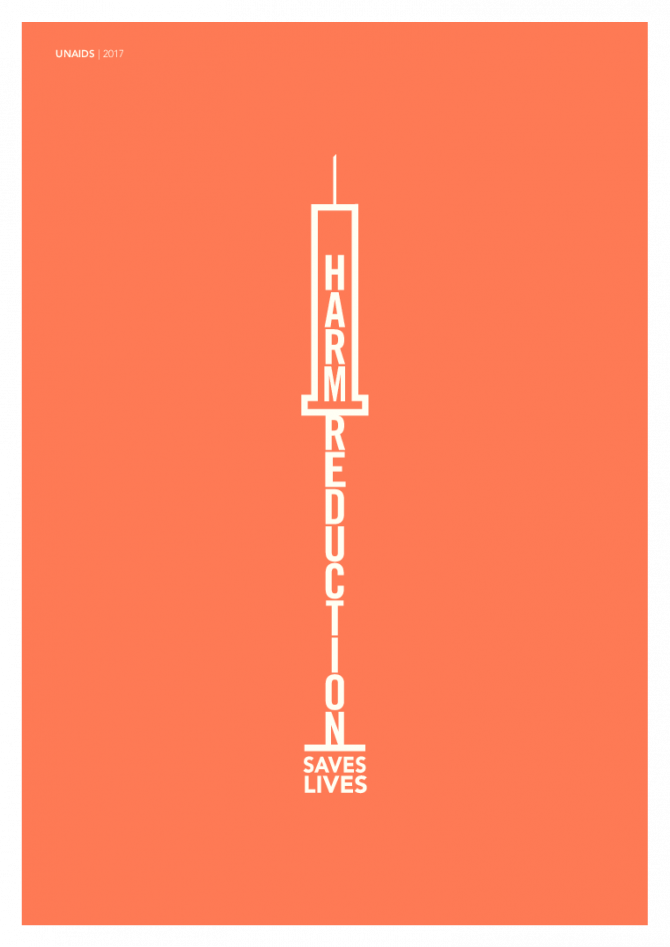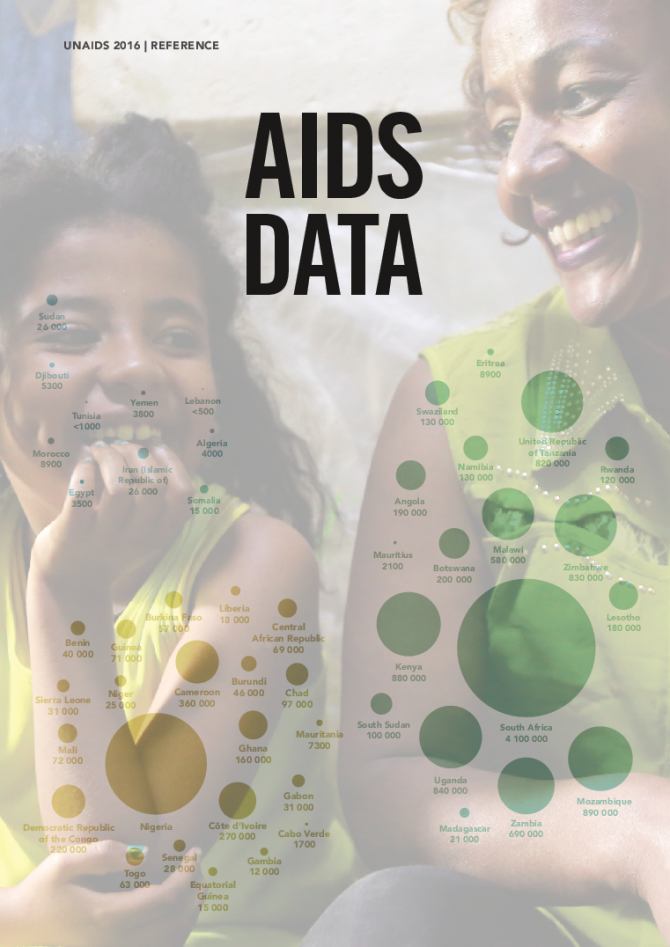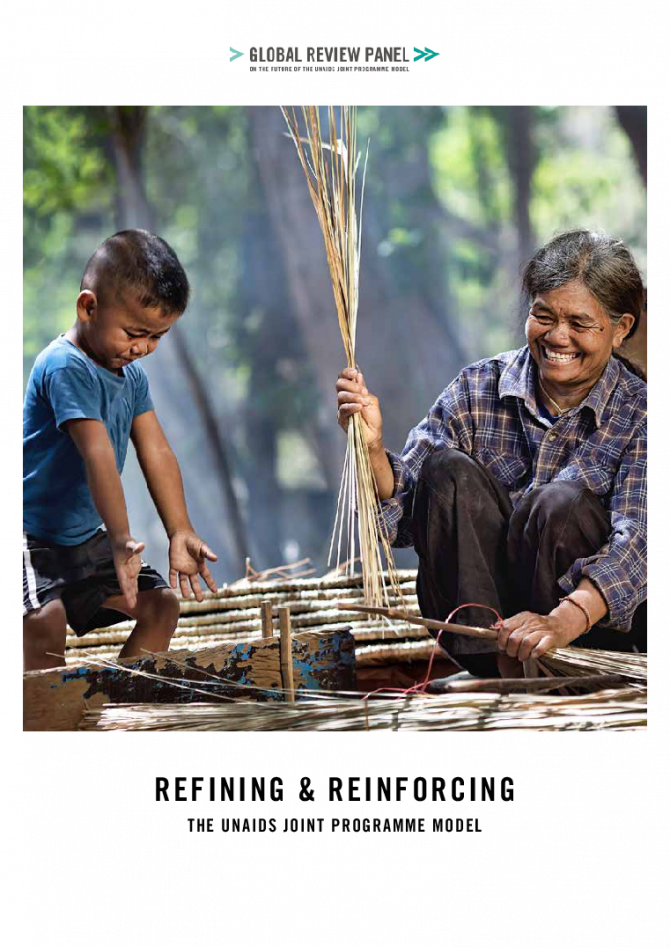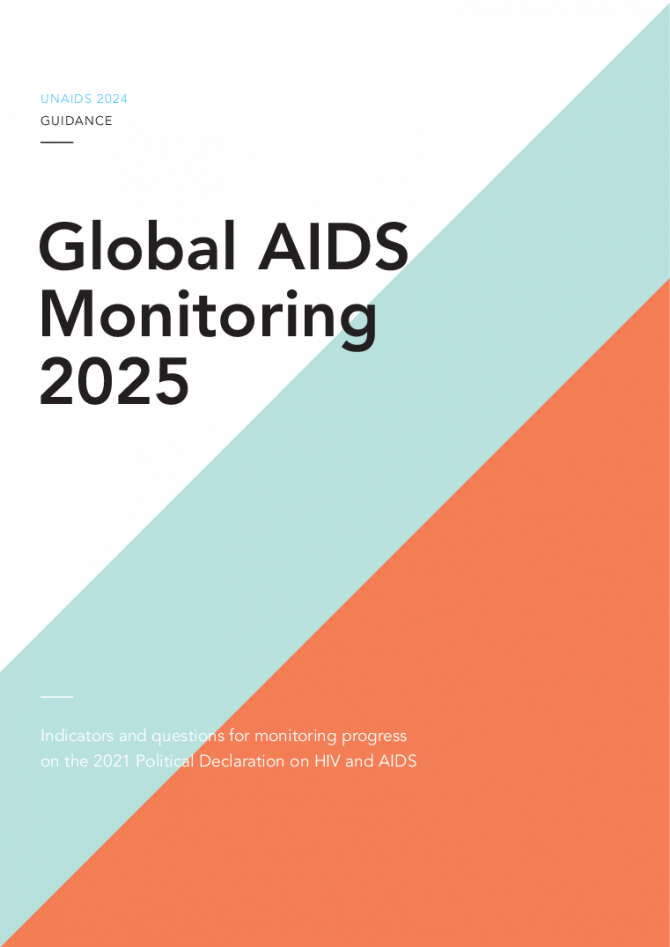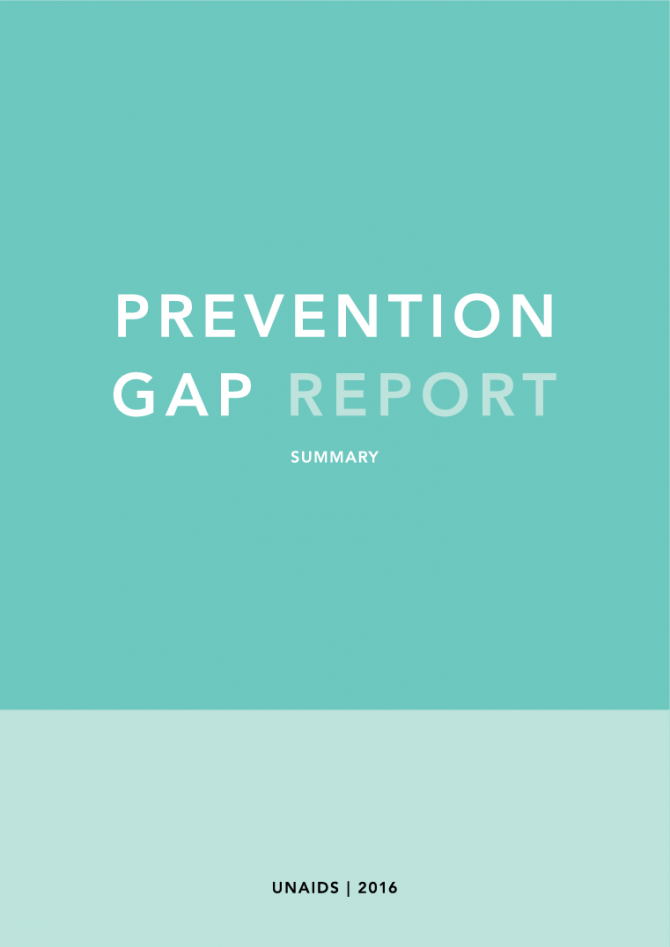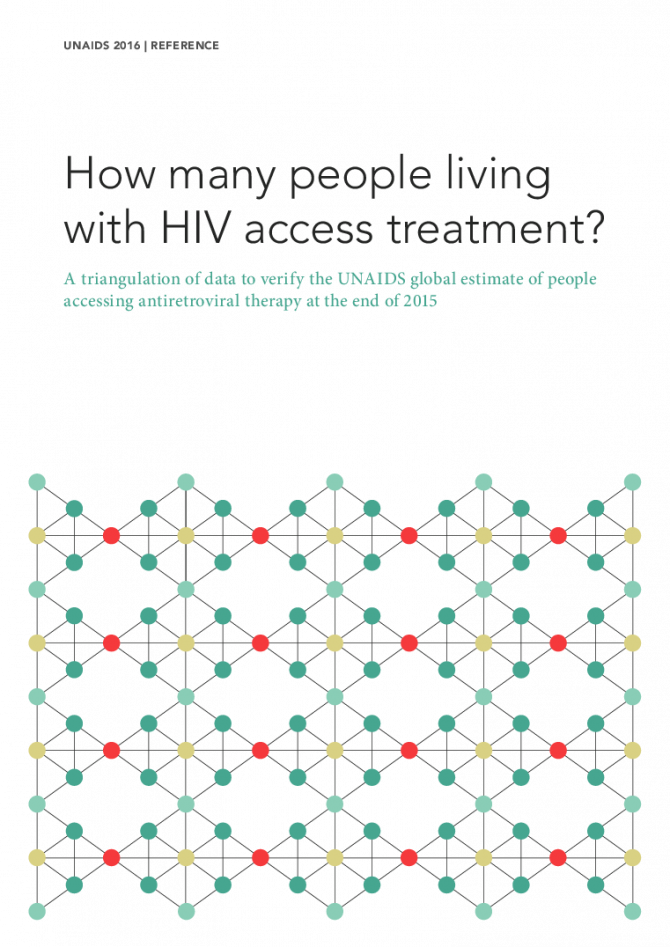Documents
Public health and HIV viral load suppression
19 July 2017
Documents
UNAIDS DATA 2017
20 July 2017
UNAIDS has collected and published information on the state of the world’s HIV epidemic for the past 20 years. This information has shaped and guided the development of the response to HIV in regions, countries and cities worldwide. This edition of UNAIDS data contains the highlights of the very latest data on the world’s response to HIV, consolidating a small part of the huge volume of data collected, analysed and refined by UNAIDS over the years.
Documents
The Sustainable Development Goals and the HIV response Stories of putting people at the centre
12 July 2017
The pages that follow tell the powerful and moving stories of people who are living with or affected by HIV and who have experienced positive improvements in their lives because of the synergies between the AIDS response and the related SDGs. Now more than ever I believe that we have the means, the science and the unity of commitment and spirit to deliver on the SDGs and to transform our world by 2030.
Documents
AIDS data
02 May 2017
The old saying “What gets measured gets done” may be a cliché, but is still very true for the response to HIV. Over the years, a detailed understanding of the HIV epidemic has emerged through the collection, analysis and dissemination of data, helping programmes to reach the right people in the right place and at the right time. Having high-quality data on the AIDS response has enabled ambitious, measurable and time-bound targets to be set for tracking progress and ensuring accountability.
Documents
Refining and reinforcing the UNAIDS joint programme model
01 May 2017
This report reflects a new era for the UN. It offers practical solutions to transforming the way the Joint Programme works. As the UN charts out its reform agenda, this report provides the first organizational effort to translate the directions set out in the Quadrennial Comprehensive Policy Review into specific, actionable recommendations on financing, joint working and accountability. But these recommendations should not stop at the door of the Joint Programme, we encourage Member States as well as our colleagues across the UN Development system to consider these recommendations as they take their own steps towards organizational repositioning, as together, we build a UN fit for purpose in leading the world to achieve the vision of the 2030 Agenda for Sustainable Development, including to leave no one behind.
Documents
When women lead, change happens
08 March 2017
Today, we are at the cusp of eliminating new HIV infections among children—a movement led by women. More women are accessing antiretroviral therapy than men, transferring the benefits of their good health to their families and economies. When young women are empowered and have their rights fulfilled, HIV prevalence falls, there are fewer unintended pregnancies, fewer maternal deaths and fewer dropouts from school and more women join the workforce. When young women have access to education, health outcomes dramatically improve.
Documents
Indicators and questions for monitoring progress on the 2021 Political Declaration on HIV and AIDS — Global AIDS Monitoring 2025
17 December 2024
The indicators and questions in this document are designed for use by national AIDS programmes and partners to assess the state of a country’s HIV and AIDS response, and to measure progress towards achieving national HIV targets. Countries are encouraged to integrate these indicators and questions into their ongoing monitoring efforts and to report comprehensive national data through the Global AIDS Monitoring (GAM) process. In this way they will contribute to improving understanding of the global response to the HIV epidemic, including progress that has been made towards achieving the commitments and global targets set out in the new United Nations Political Declaration on HIV and AIDS: Ending Inequalities and Getting on Track to End AIDS by 2030, adopted in June 2021, and the linked Sustainable Development Goals.
Documents
Prevention Gap Report: Summary
11 July 2016
Efforts to reach fewer than 500 000 new HIV infections by 2020 are off track. This simple conclusion sits atop a complex and diverse global tapestry. Data from 146 countries show that some have achieved declines in new HIV infections among adults of 50% or more over the last 10 years, while many others have not made measurable progress, and yet others have experienced worrying increases in new HIV infections. More on the Prevention Gap report | Slides are also available for download

